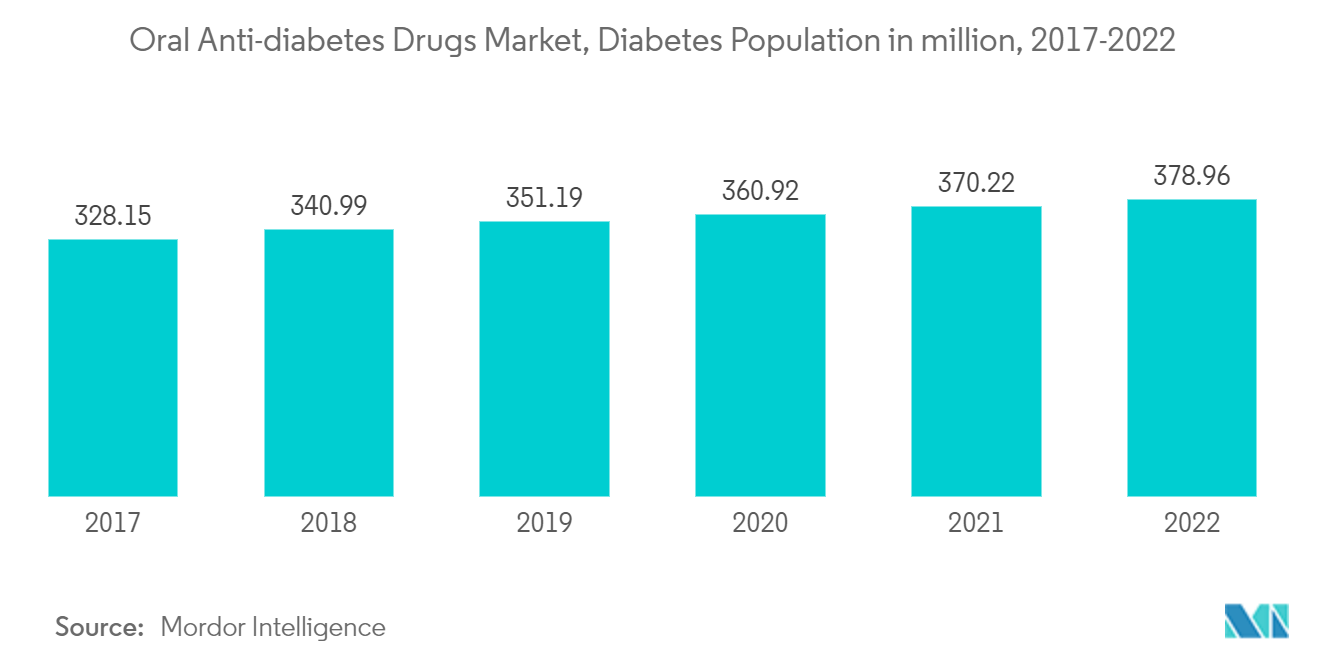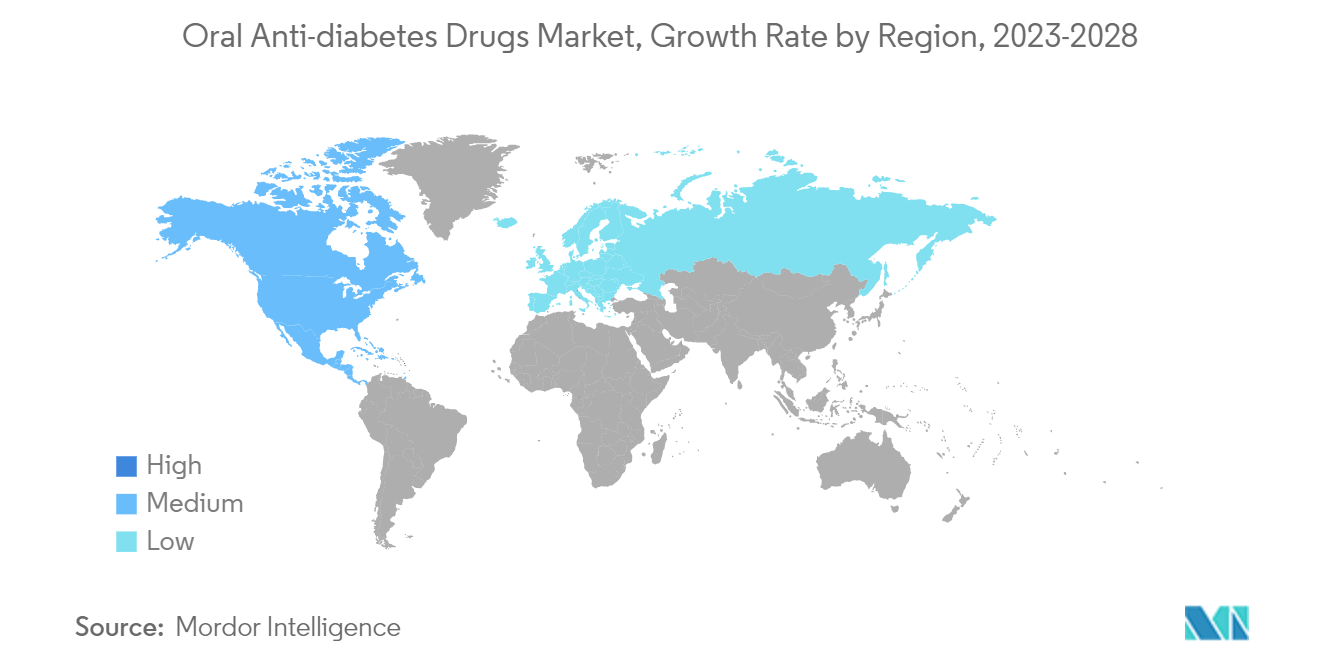Market Trends of Oral Anti-Diabetic Drugs Industry
Biguanide Segment Occupies the Highest Market Share in the Oral Anti-Diabetic Drugs Market in the current year
Biguanide Segment holds the highest share of about 45% in the Oral Anti-Diabetic Drugs Market in the current year.
Metformin is classified as a biguanide used for treating type 2 diabetes. It is prescribed for its off-label use in people with conditions such as insulin resistance. Since the introduction of metformin in T2DM therapy, many patients were treated successfully with this globally available medication. It includes a favorable risk/benefit profile recommended by IDF guidelines as a first-line drug. Long-term positive experience with the use of metformin, strong evidence of clinical efficacy, safety, high adherence rate, low cost, general availability, and cost-effectiveness are the contributing factors to the high market share. The World Health Organization put metformin on the list of essential medicines: 'medicines that satisfy the priority of health care needs of the population.'
Biguanides are a class of medications used to treat type 2 diabetes. They work by reducing the production of glucose that occurs during digestion. Metformin is the only biguanide currently available in most countries for treating diabetes. Glucophage (metformin) and Glucophage XR (metformin extended release) are well-known brand names for these drugs. Others include Fortamet, Glumetza, and Riomet. Metformin is also available in combination with several other types of diabetes medications, such as sulfonylureas.
In July 2022, Zydus Lifesciences announced that it had received final approval to market Empagliflozin and Metformin Hydrochloride tablets in multiple strengths. Empagliflozin and Metformin Hydrochloride tablets are used with proper diet and exercise to improve glycemic control in adults with type 2 diabetes mellitus. They are also used to lower the risk of cardiovascular death in patients with type 2 diabetes mellitus and established cardiovascular disease.
Owing to the factors above and the increasing prevalence, the market will likely continue to grow.

Asia-Pacific Region is Expected to witness highest CAGR in the Oral Anti-Diabetic Drugs Market over the forecast period
The Asia-Pacific region is expected to register a CAGR of more than 4% over the forecast period.
According to International Diabetes Federation, 90 million adults lived with diabetes in the IDF South-East Asia Region and 206 million adults in the IDF Western Pacific Region in 2021. This figure is estimated to increase to 113 million and 238 million by 2030. The use of oral anti-diabetes drugs is rising because new-generation oral drugs, such as DPP-4 and SGLT-2, reduce the rate of CV risk in diabetes patients.
China and Japan are recognized as potential developing markets in the Asia-Pacific region due to the growing diabetic population. Japan is a mature market with associated challenges, like slow economic growth, an aging population, and increased competition. The country is witnessing a significant increase in generic drug manufacturers. Furthermore, the leading global players in the market studied are facing intense competition from the regional players.
Diabetes reduces lifespan, and people with the disease are likely to experience blindness and be hospitalized for amputations, kidney failure, heart attacks, strokes, and heart failure. First-line therapy used in patients with T2D is metformin monotherapy. Other options must be considered when metformin is contraindicated or not tolerated or when treatment goals are not achieved after three months of use at the maximum tolerated dose. The growing spectrum of diabetes mellitus drugs includes dipeptidyl peptidase-4 (DPP-4) inhibitors, sodium-glucose cotransporter-2 inhibitors, and glucagon-like peptide-1 agonists, generally used to supplement treatment with metformin.
The market is expected to grow during the forecast period due to the factors above.


